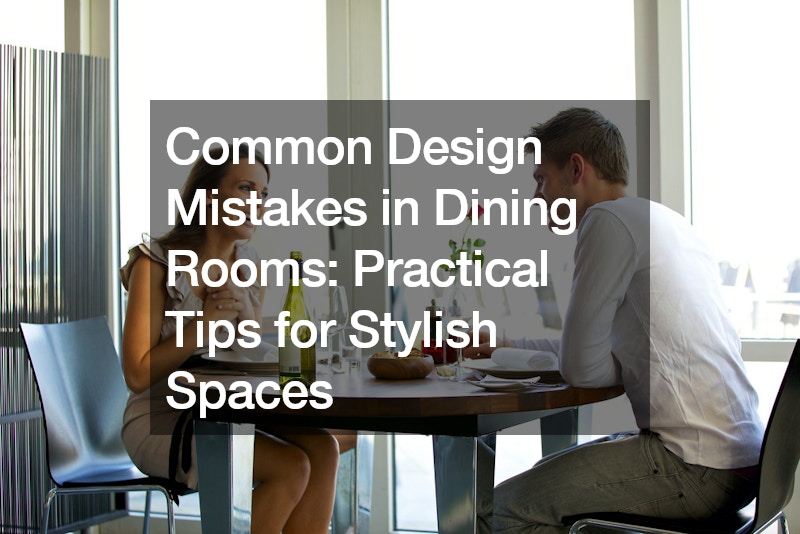The dining room is more than just a place to eat; it’s a hub of social activity and familial connection. However, creating the perfect dining space can be challenging, especially when common design mistakes are made. From improper space planning to mismatched furniture, these errors can detract from the overall aesthetic and functionality of the room. In this article, we’ll explore some practical tips for avoiding these pitfalls and creating a stylish dining space that enhances both form and function.
Space Planning: One of the most crucial aspects of designing a dining room is proper space planning. This begins with choosing the right size dining table for your room.
Before making any purchases, take accurate measurements of the space, including the length, width, and ceiling height. Subtracting 36 inches from the walls ensures there is enough room for chairs to be comfortably pulled in and out from under the table. Opting for a solid wood dining table adds warmth and timeless appeal to the space.
Area Rug Selection: Another common mistake is choosing an area rug that is too small for the dining area. The rug should be large enough to accommodate the dining table and chairs, allowing for ample space to move around. If your dining chairs have rounded backs, ensure they remain on the rug when pulled out. A properly sized rug not only grounds the room but also adds texture and visual interest.
Choosing the Right Shape: The shape of your dining table should complement the proportions of the room. For rectangular spaces, opt for a rectangular or oval dining table to span the width of the room. Square rooms are best suited for square or round tables. Avoid putting a rectangular table in a square space, as it can throw off the balance of the room. Additionally, consider the style of the table; a solid wood dining table adds warmth and character to the space.
Lighting Selection: Lighting plays a crucial role in setting the mood and ambiance of the dining room. Choose fixtures that complement the shape of your table and provide adequate illumination. Rectangular or oval tables benefit from linear or horizontal light fixtures that span the length of the table. Square or circular tables pair well with squared or round-shaped fixtures. Ensure that the lighting is placed at the appropriate height to avoid casting harsh shadows or creating glare.
Paint Color Coordination: When selecting paint colors for the dining room, it’s essential to coordinate them with the furniture and lighting. Avoid clashing colors by choosing paint colors last, after you’ve selected your dining table, chairs, and lighting fixtures. Consider the undertones of the wood finishes when selecting paint colors to ensure a cohesive look throughout the room.
Mixing and Matching: Gone are the days of matching dining sets; instead, opt for a curated mix of furnishings that reflect your personal style. Start with the largest piece in the room–the dining table–and then mix and match side chairs and head chairs to add visual interest. A solid wood dining table can be paired with upholstered chairs in bold colors or neutral tones with texture to create a dynamic and inviting space.
Comfort Considerations: While style is essential, comfort should not be overlooked when selecting dining chairs. Opt for chairs that are both stylish and comfortable, especially if you enjoy hosting long dinners or gatherings. Test out chairs in person if possible, or ensure there is a reasonable return policy when purchasing online. Consider the needs of your family, including children, and choose chairs that are sturdy and easy to clean.
Creating a Focal Point: Every dining room should have a focal point that draws the eye and adds visual interest. This could be a statement light fixture, a piece of artwork, or a decorative wall treatment. Choose a focal point that reflects your personal style and enhances the overall ambiance of the room.
Avoiding Overdecorating: While accessories can add personality to the dining room, avoid overdecorating the space. Keep table decor simple and strategically styled to avoid clutter. Choose a few meaningful accessories that complement the style of the room and allow the focal point to shine.
In conclusion, designing a stylish dining room requires careful consideration of space planning, furniture selection, lighting, and decor. By avoiding common design mistakes and following these practical tips, you can create a dining space that is both functional and aesthetically pleasing. Remember to prioritize comfort, cohesion, and personal style to create a dining room that enhances your home’s overall appeal.
.


